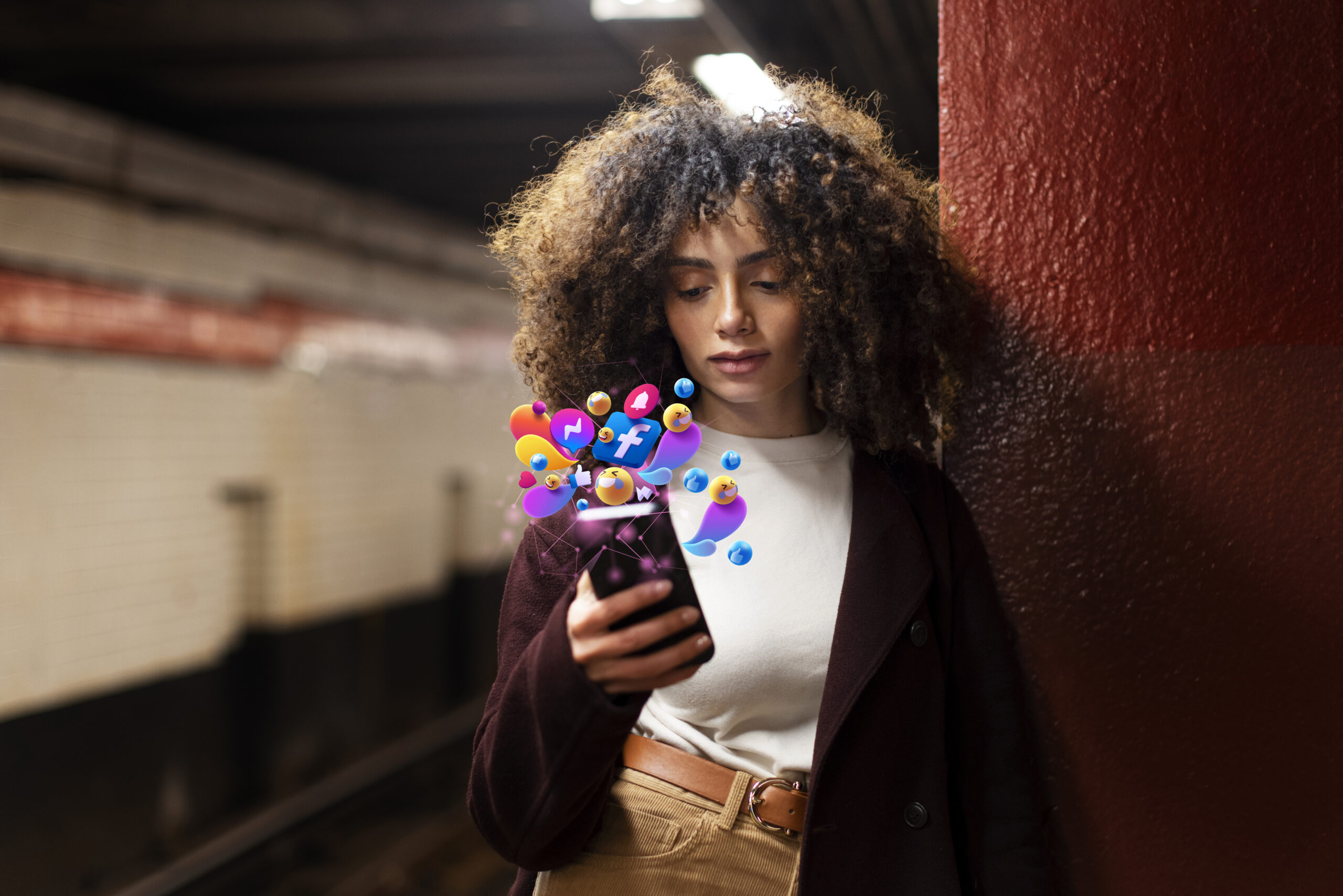In today’s hyper-connected digital world, social media has become more than just a place for social interaction—it’s an economic and psychological powerhouse. Businesses have learned to capitalize on its virality and immediacy to promote their brands. However, many marketers still underestimate one of the most powerful forces behind successful campaigns: emotion. Emotional marketing has transcended the surface-level metrics of likes, shares, and comments to tap into the deep psychological drivers that influence human behavior. It’s no longer enough to simply grab attention; brands must now resonate with their audience on a personal and emotional level.
While traditional marketing focused on features, price points, and convenience, today’s consumer wants something more meaningful. They crave authenticity, purpose, and emotional connection. Whether it’s a heartfelt story, a laugh-out-loud meme, or a piece of content that evokes nostalgia, emotions drive decisions. Studies have shown that emotional responses to marketing actually have a more significant impact on purchasing intent than the content of the ad itself. In the fast-scrolling landscape of social media, capturing someone’s heart is more impactful than merely catching their eye.
As the digital landscape grows more saturated, emotional marketing serves as a differentiator. In a sea of sameness, emotional resonance is what makes a brand memorable. It creates stories people want to retell, feelings they want to relive, and experiences they want to share. Successful brands aren’t just selling products—they are selling values, lifestyles, and most importantly, feelings.
From Attention to Affection: Shifting the Marketing Paradigm
The shift from performance metrics like click-through rates and impressions to emotional impact signals a broader evolution in marketing. Today, marketers understand that attention is merely the starting point of a customer journey. Affection—true brand love—is the goal. Social media, with its interactive and immediate nature, is a perfect platform to foster this emotional bond. Users don’t just consume content passively; they engage with it, respond to it, and even co-create it.
Social platforms provide an opportunity to tap into people’s daily lives. With carefully crafted storytelling, brands can become part of their audience’s emotional landscape. Whether it’s Instagram stories that capture fleeting moments or TikTok trends that evoke cultural relevance, emotional marketing allows brands to exist in the same space as users’ personal experiences. When people feel something, they are more likely to remember and share it.
Marketers are now aligning their strategies with emotional psychology. Joy, anger, surprise, sadness, fear—each emotion serves as a trigger for engagement. Joy leads to sharing, sadness to empathy, fear to urgency, and anger to action. The emotional blueprint of a campaign determines not just its reach, but its ripple effect. Campaigns that strike an emotional chord often spread organically, achieving viral momentum without the need for massive ad budgets.
The Science Behind Emotional Marketing
Neuroscience backs up what experienced marketers have long known: people make decisions based on emotion, then rationalize them with logic. Brain imaging studies reveal that emotional reactions are processed in the limbic system, which influences memory, attention, and decision-making. This neurological reality explains why emotional marketing is so effective. People may forget a statistic, but they won’t forget how a campaign made them feel.
This scientific understanding is leading marketers to reframe their approach. Instead of asking, “What features should we promote?” they now ask, “How do we want our audience to feel?” The response dictates not only the messaging but also the tone, visuals, and platform choice. Emotional marketing doesn’t just generate short-term reactions; it builds long-term brand equity by establishing deep, personal connections with the audience.
Moreover, social media platforms are uniquely designed to amplify emotional content. Algorithms prioritize engagement, and emotional posts naturally generate more interactions. This means that emotional marketing isn’t just more effective on a psychological level—it’s also favored by the very systems that determine content visibility. In this way, emotions are not only human currency but also algorithmic fuel.
Emotion as a Brand Differentiator
In an increasingly commoditized marketplace, where products and services are often indistinguishable, emotional marketing becomes the key differentiator. Think of iconic campaigns that left a mark not because of the product itself but because of the feeling they evoked. Nike doesn’t just sell shoes; it sells perseverance. Coca-Cola isn’t just a beverage; it’s a symbol of happiness. These emotional anchors transform a simple transaction into a shared experience.
Brands that understand their audience’s emotional landscape can tap into their core values and aspirations. A campaign that mirrors the struggles, dreams, or humor of its audience instantly becomes more relatable. Authenticity becomes paramount here. Emotional marketing isn’t about manipulation—it’s about resonance. The goal is to reflect the human condition in a way that creates mutual understanding between brand and consumer.
What makes this approach sustainable is the loyalty it fosters. Emotional marketing builds brand advocates rather than just buyers. A customer who feels emotionally invested in a brand is more likely to remain loyal, forgive mistakes, and recommend the brand to others. This kind of loyalty isn’t won through discounts or flashy features; it’s earned through emotional honesty and consistency.
The Viral Nature of Emotional Content
One of the standout features of emotional marketing on social media is its virality. Emotional content is more likely to be shared, commented on, and discussed. When a campaign taps into collective feelings—be it hope during a crisis or unity during social movements—it transcends the boundaries of typical advertising. It becomes a cultural moment.
This virality is not random; it’s the result of emotional triggers carefully embedded in the content. Fear can create urgency. Joy can inspire sharing. Anger can lead to activism. Emotional marketing enables brands to ride the wave of social sentiment, aligning their messaging with the public mood to achieve maximum impact.
Timing also plays a crucial role. Emotional marketing needs to feel timely and relevant. A campaign that celebrates family might perform exceptionally well around holidays. A message of resilience may strike a chord during economic downturns. Successful marketers constantly read the emotional temperature of their audience and tailor their campaigns accordingly.
Social Media Platforms as Emotional Arenas
Different platforms evoke different emotional interactions. Instagram appeals to aesthetic joy and aspirational feelings. Twitter often amplifies outrage and humor. TikTok thrives on surprise and relatability. Understanding the emotional profile of each platform allows marketers to tailor their content to fit the native tone and behavior of its users.
For instance, a touching narrative about overcoming adversity might perform well on Facebook, where users are accustomed to longer, emotionally rich content. A snappy, feel-good clip could go viral on TikTok, tapping into the platform’s rapid, dopamine-driven environment. Emotional marketing is not one-size-fits-all; it’s a tailored approach that considers the emotional ecosystem of each platform.
User-generated content adds another layer. When consumers emotionally connect with a brand, they often become co-creators. They share testimonials, recreate branded challenges, or even create memes. This kind of emotional engagement is priceless because it’s authentic, peer-driven, and inherently viral.
Ethical Considerations in Emotional Marketing
With great power comes great responsibility. Emotional marketing walks a fine line between resonance and exploitation. When done ethically, it builds trust and loyalty. When misused, it can backfire and damage a brand’s reputation. Audiences today are highly attuned to authenticity and can quickly spot disingenuous efforts.
Transparency and sincerity are key. Brands should aim to inspire or empathize rather than manipulate. Emotional marketing should reflect genuine brand values and missions, not opportunistic trend-chasing. Aligning emotional messaging with corporate social responsibility efforts can also enhance credibility. For example, a campaign about mental health should ideally be backed by tangible efforts to support mental health initiatives.
Marketers must also be mindful of cultural sensitivity. Emotions can be universal, but how they are expressed and interpreted often varies across cultures. A campaign that resonates in one region might be tone-deaf in another. Emotional marketing should be inclusive, respectful, and adaptable to global audiences.
Measuring the Impact of Emotional Campaigns
Unlike direct response marketing, the impact of emotional campaigns isn’t always immediately measurable. However, there are still key indicators that can signal success. Increased brand mentions, higher engagement rates, and positive sentiment in comments are often early signs that a campaign is resonating emotionally.
Over time, emotional marketing contributes to brand equity, customer retention, and organic growth. Repeat purchases, higher customer lifetime value, and word-of-mouth referrals are often the long-term fruits of emotionally-driven marketing strategies. Emotional resonance creates a foundation for trust, which is invaluable in an age of skepticism.
New tools powered by AI and machine learning are helping marketers quantify emotional engagement. Sentiment analysis, facial recognition, and emotional tracking software are providing insights into how audiences emotionally react to content. These innovations are enabling data-driven decisions in what was once considered an intuitive field.
Emotional Marketing in the Age of AI
As artificial intelligence becomes more integrated into marketing workflows, there’s a growing opportunity to scale emotional marketing. AI tools can analyze emotional cues in user-generated content, tailor ad delivery based on emotional profiles, and even generate emotionally resonant copy. Far from making marketing less human, AI can help brands become more emotionally intelligent.
However, this must be done thoughtfully. Emotional marketing powered by AI should never feel robotic or impersonal. The best campaigns will combine the efficiency of AI with the empathy of human creativity. Marketers should focus on emotional authenticity, ensuring that automation enhances rather than replaces human touch.
AI also enables predictive emotional targeting. By analyzing past interactions, AI can forecast what kind of emotional content is likely to resonate with specific audience segments. This helps marketers craft personalized campaigns that feel intuitive, timely, and relevant.
Conclusion: The Future Belongs to Emotionally Intelligent Brands
In a marketplace where attention is fleeting and competition is fierce, emotional marketing offers a sustainable path to connection and conversion. It transforms brands into storytellers, products into experiences, and consumers into communities. While data, technology, and strategy remain vital, emotion is the glue that holds it all together.
Social media is not just a marketing channel—it’s a stage for emotional expression. Brands that understand this will not only survive but thrive. They will build communities, inspire loyalty, and become part of their audience’s emotional memory. In the end, it’s not about the number of likes, but the depth of love.
Emotion will continue to redefine marketing in the years to come. As platforms evolve and audiences demand more authenticity, brands must be emotionally intelligent, ethically grounded, and strategically agile. The age of emotional marketing isn’t coming—it’s already here. And those who master its art will lead the next wave of meaningful brand engagement.








